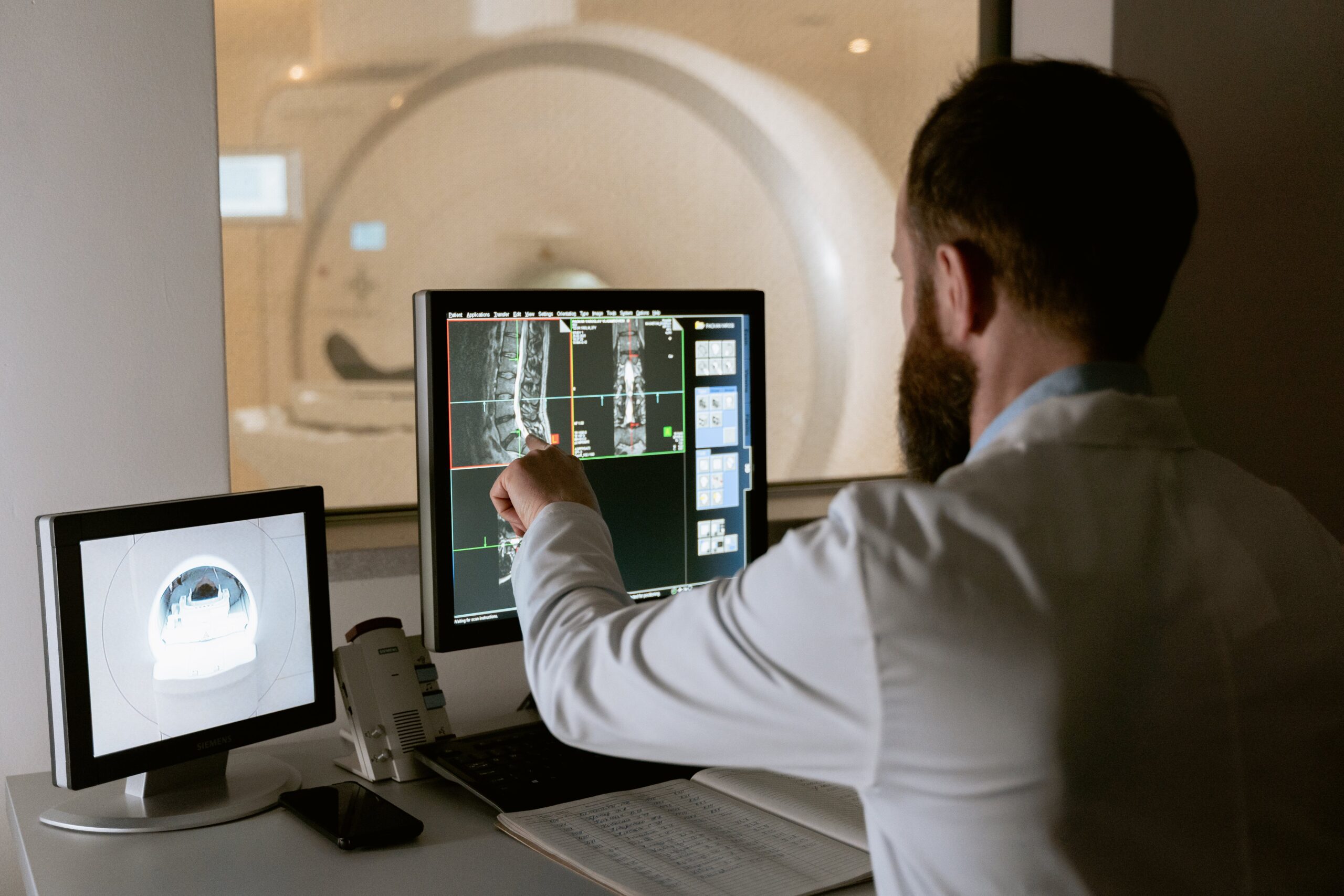Head and neck cancer is a type of cancer that begins in the internal tissue of the mouth, throat, sinuses, salivary gland, neck and other areas. There is a key advantage of modern imaging technology which provides cross-sectional images that show any abnormalities or tumours.Head and neck cancer is the 6th most common cancer worldwide.
In India head and neck cancer is prevalent due to widespread use of tobacco throughout the country.Ganesh Diagnostic and Imaging centre, uses the most advanced diagnostic technology and provides best care to the patients for better treatment.
The timely detection and precision diagnosis of head and neck cancer are crucial for effective treatment. As early detection and timely treatment is a crucial element in case of cancer. So we advise everyone to undergo regular health checkup and screening.There are various diagnostics available to know the extent and stage of cancer like- Ultrasonography, CT Scan, MRI and PET CT Scan . Other than this some blood test and HPV testing are done to detect the Human Papillomavirus because it is sensitive to radiation therapy and chemotherapy and has a good prognosis. Additional CT scan plays a pivotal role in identifying, staging and planning of treatment strategies for these cancers. CT scan and perfusion study (Perfusion CT) evaluates the masses by measuring the mean transit time, blood flow and blood volume in benign cancerous lesions in comparison with malignant lesions.
As oral, head and neck cancer is fatal so it requires a multidisciplinary approach combining treatment modalities like surgery, chemotherapy or radiation therapy.
Diagnosis of Head and Neck Cancer The diagnosis of head and neck cancer is made by using a variety of tests. When deciding on a diagnostic test, your doctor choose diagnostic tests by considering these factors:-
* Type of cancer
* Sign a symptoms
* Your age and health
* Results of prior medical tests
Signs and Symptoms Associated With Head and Neck Cancer
– Persistent sore throat
– Pain in swallowing
– Changes in voice or hoarseness
– Facial numbness
– Pain in facial region
– Neck pain
– Trouble in breathing and speaking
– Nose bleed, blood in saliva or phlegm
– Frequent ear or sinus infections
– White or red patch intra orally
– Swelling or lump in neck, jaw and side of your face.
Types of Head and Neck Cancer
* Oral cancer- Cancer that may involve orofacial structures like lips, tongue, buccal mucosa, top and bottom of the mouth or behind the wisdom tooth.
* Oropharyngeal cancer:- Cancer of the middle part of your throat (oropharynx) or Tonsillar cancer.
* Hypopharyngeal cancer
* Laryngeal cancer- Cancer of a larynx or voice box
* Nasopharyngeal Cancer
* Salivary gland cancer
* Nasal cavity cancer
* Nasal and para nasal sinus cancer
The Importance of CT Scan
CT scans utilise X-rays and computer technology to create detailed cross-sectional images of the body. In the context of head and neck cancer, CT scans provide high-resolution images that help in:
Detection and Localization: CT scans help in identifying the presence and location of tumours within the head and neck region. They reveal the size, shape, and precise location of tumours or abnormalities. Also detect if there is any metastatic lesion.
Staging: CT Scan images determine the stage of cancer–whether it’s localised or has spread to nearby structures–is vital for treatment planning. CT Scan can asss the extent of tumour growth and its potential invasion into neighbouring tissues or lymph nodes.
Treatment Planning: CT scans assist healthcare professionals in personalised treatment planning. This can include surgery, radiation therapy, chemotherapy, immunotherapy or a combination of these therapies.
Monitoring Response to Treatment:
Doctors may monitor the treatment process to evaluate the efficacy and response of treatment and make necessary adjustments to the treatment plan.
Conclusion
CT scans are a vital medical diagnostic tool in the comprehensive management of head and neck cancer. While there is fear and anxiety for the cancer diagnosis and concerns about the claustrophobia, radiation or fear of receiving bad news. Don’t let fear overcome you in the path of better health. CT Scan In delhi at an affordable price facilitates early detection, precise staging, treatment planning and monitoring, contributing significantly to improve patient outcomes.
Medical community continues to explore innovative techniques to enhance diagnostic accuracy while minimising potential risks associated with radiation exposure.
Early detection through routine screenings and advanced medical intervention remain fundamental in combating head and neck cancers. Embrace the opportunity to take control of your health and your loved ones. Discovery of modern technology has undoubtedly made Ganesh Diagnostic Centre the best CT scan diagnostic centre for head and neck cancer diagnosis in Delhi and Delhi NCR as well.
Remember, knowledge about disease, early intervention and facing your fear can improve cancer patients’ health outcomes.























